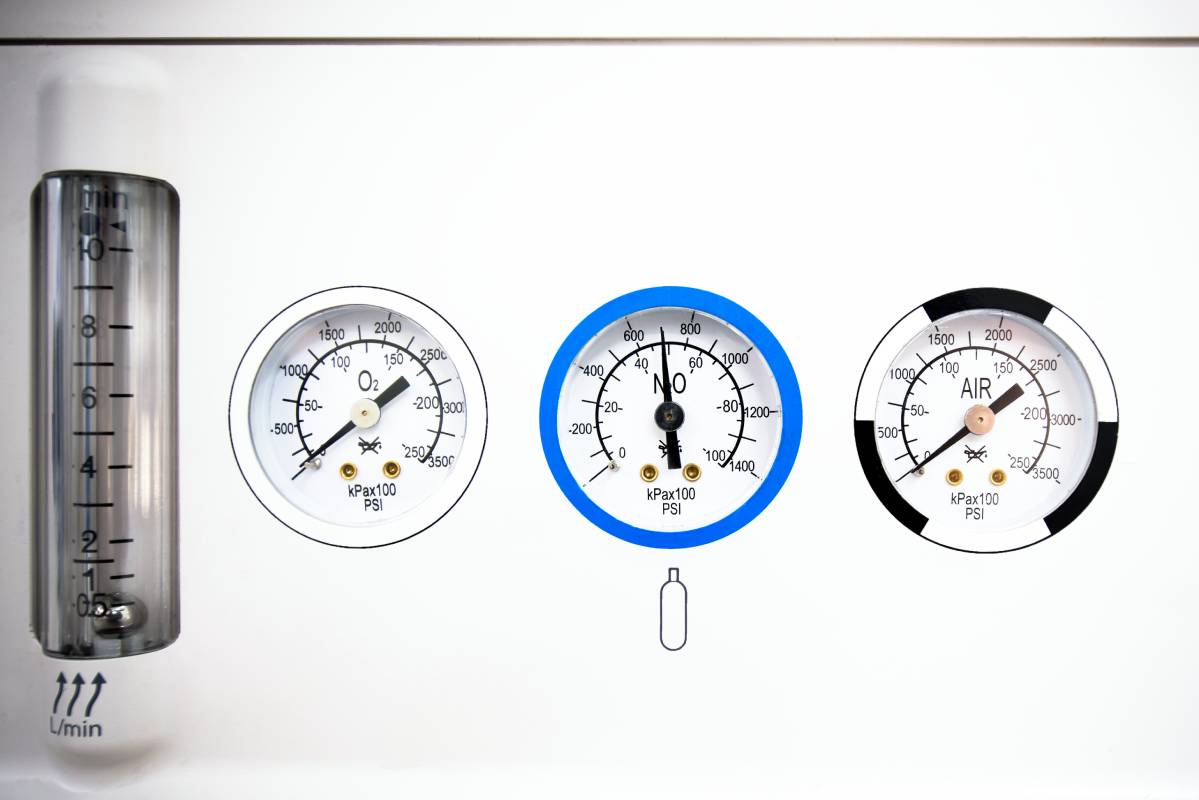High vs. Low Oxygen during General Anesthesia

One of the factors which must be considered by anesthesiologists during the perioperative period is the fraction of inspiratory oxygen administered to the patient. The World Health Organization and the U.S. Centers for Disease Control recommend the use of 0.8 fraction of inspiratory oxygen in order to mitigate risk of infection at the surgery site.3 This is significantly higher than the fraction of oxygen found in air in the atmosphere, which around 0.21. Anesthesia providers administer a high fraction of inspiratory oxygen for a number of additional reasons, including prevention of hypoxemia in severely compromised patients or patients with difficult airway.
Despite the fact that administering high fractions of inspiratory oxygen is commonplace in the OR, there are reasons to suspect that this practice could be damaging. For example, administration of pure oxygen has been shown to lead to atelectasis in 90 percent of patients.1,2 In turn, atelectasis has been associated with lung damage and a myriad of pulmonary complications, such as increased risk of pneumonia and prolonged hospital stay.2
In order to determine whether high fractions of inspiratory oxygen during the perioperative period increase the risk of post-surgical complications, authors Lim et al. performed a meta-analysis of randomized controlled trials.3 Twenty-six trials, or a total of 4991 patients, were studied in their analysis. Criteria for inclusion were studies which used adult patients (over 18 years of age) undergoing general anesthesia for non-thoracic surgery. For the authors’ purposes, low fraction of inspiratory oxygen was defined as less than or equal to 50 percent, whereas a high fraction was 80 percent or above. The primary outcome was mortality. Secondary outcomes included atelectasis, pneumonia, respiratory failure, postoperative pulmonary complications, oxygen parameters, pulmonary function, ICU admissions, and days spent in the hospital. Differences in outcome were also evaluated in terms of body mass index (BMI).
Lim et al. found that patients undergoing general anesthesia who received high fraction inspiratory oxygen did not experience increased rates of postoperative mortality. Notably, a number of secondary outcomes – including frequency of pneumonia, respiratory failure, and length of time spent in the hospital – were comparable between high fraction and low fraction inspiratory oxygen groups. While the authors did note increased severity of atelectasis and decreased partial pressure of oxygen in patients that received a high fraction of inspiratory oxygen, they concluded that these risks were outweighed by the benefits of hypoxemia prevention. Moreover, subgroup analysis by BMI revealed no significant differences in these findings for patients with a BMI greater than 30 kg/m2, except that high fraction inspiratory oxygen was associated with shortened length of hospital stay. The authors therefore advised that anesthesiologists should not be reluctant to administer high concentrations of oxygen throughout non-thoracic surgery.
The authors did note a few shortcomings inherent to their own study. For example, patients in the low fraction oxygen group often received high fractions of oxygen during anesthesia induction and emergence, as is common practice. This meant that oxygen fraction was not always consistently different between groups. However, despite this likely unavoidable shortcoming, Lim et al.’s paper presents a compelling argument for the safety of high fraction inspiratory oxygen in the OR.
References
1. Lundquist, H., Hedenstierna, G., Strandberg, A., Tokics, L., & Brismar, B. (1995). CT-assessment of dependent lung densities in man during general anaesthesia. Acta radiologica (Stockholm, Sweden : 1987), 36(6), 626–632.
2. Rothen, H. U., Sporre, B., Engberg, G., Wegenius, G., Reber, A., & Hedenstierna, G. (1995). Prevention of atelectasis during general anaesthesia. Lancet (London, England), 345(8962), 1387–1391. https://doi.org/10.1016/s0140-6736(95)92595-3
3. Lim, C. H., Han, J. Y., Cha, S. H., Kim, Y. H., Yoo, K. Y., & Kim, H. J. (2021). Effects of high versus low inspiratory oxygen fraction on postoperative clinical outcomes in patients undergoing surgery under general anesthesia: A systematic review and meta-analysis of randomized controlled trials. Journal of clinical anesthesia, 75, 110461. Advance online publication. https://doi.org/10.1016/j.jclinane.2021.110461
